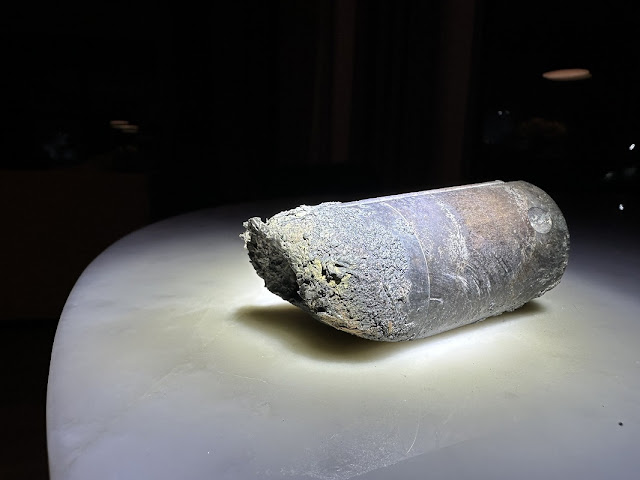Alejandro Otero of Naples, Florida, would probably say he's incredibly unlucky. I'm thinking incredibly lucky to have observed something so improbable it has only happened a handful of times in human history.
A few weeks ago, something from the heavens came crashing through the roof of Alejandro Otero's home, and NASA is on the case.
In all likelihood, this nearly 2-pound object came from the International Space Station. Otero said it tore through the roof and both floors of his two-story house in Naples, Florida.
Otero wasn't home but his son was. His Nest home security camera captured the sound of the crash at 2:34 pm local time (19:34 UTC) on March 8.
That's an important piece of information because it is a close match for the time—2:29 pm EST (19:29 UTC)—that US Space Command recorded the reentry of a piece of space debris from the space station. At that time, the object was on a path over the Gulf of Mexico, heading toward southwest Florida.
Now think of a simple way of visualizing the problem. Think of it this way: the surface area of the Earth is just under 197 million square miles. A lot of that is discarded because it doesn't lie in the latitude bands that something being tossed out of the International Space Station could come down in - and it will follow the orbit it's in until it starts re-entry. There's complete uncertainty of when it's going to re-enter until observation shows that it's very close to starting. At that point, the possible area it could land in collapses to a much smaller area.
This cylindrical object, a few inches in size, fell through the roof of Alejandro Otero's home on March 8th.Image by Otero, published on X.
It's a pretty safe bet that you and your house aren't remotely near a square mile in area so multiply the area the satellite could come hit in square miles by 27.878 million to convert it to square feet. For example, let's say the agencies tracking it said it might hit within 100 square miles. That's 2.878 Billion square feet. A random 2 square foot person is a 1 in 1.394 billion chance of getting hit by that. Makes the Lotto seem like a pretty safe bet.
That's how lucky you have to be to get that little cylinder after all the heat and chaos of re-entry.
I rush to add that I understand and sympathize with the fact that Otero has to have a lot of expensive work done to his house and he wants someone else to pay for that. I would, too. Otero turned the object over to NASA to analyze it and determine if it really is part of suspected parcel of junk that was released to re-enter the atmosphere and (presumably) burn up. It's kind a messy situation, and while I can see NASA or any other agency would want to turn it over to labs for the kind of detailed analysis it needs, I also think that's a pretty valuable artifact to have. Otero might well be able to sell it to some collector for a sum that would repair or even replace his house.
It's an interesting story far too involved to get into much more here, so if you think this is remarkable, check out the story on Ars Technica. There's a bunch of pretty amazing things in that story. An easy one to point out is that piece is most likely part of a pallet full of nickel-hydrogen batteries. Which was let go from the ISS in March of 2021, almost exactly three years before this hit, its orbit decaying a little at a time until the atmosphere finally won.


Pffft, I'm sure NASA already threatened him that if he didn't give it back they'd sic the ATF on him.
ReplyDeleteHow rude, it didn't even ring the doorbell. Just made itself to home without asking first.
ReplyDeleteWhat an unlucky coincidence! Best of luck to Mr. Otero - here's hoping his life gets back to normal quickly.
Not the lost tool bag...
ReplyDeleteI'm expecting someone to find a pile of weird tools someday - although it's most likely at the bottom of some body of water. News story in the year 3045: "construction crew building a new restaurant west of New San Francisco finds several semi-molten metal objects, thought to be remnants of something called the first international space station."
DeleteWill the FAA now shut down NASA pending a full review of this failure and the risks it poses to people on the ground? Guessing the Nanoracks trash ejection system will prevent this from happening again?
ReplyDeleteYou made me laugh, jeff d. The thought of the FAA treating NASA like anybody in the private sector...
Delete